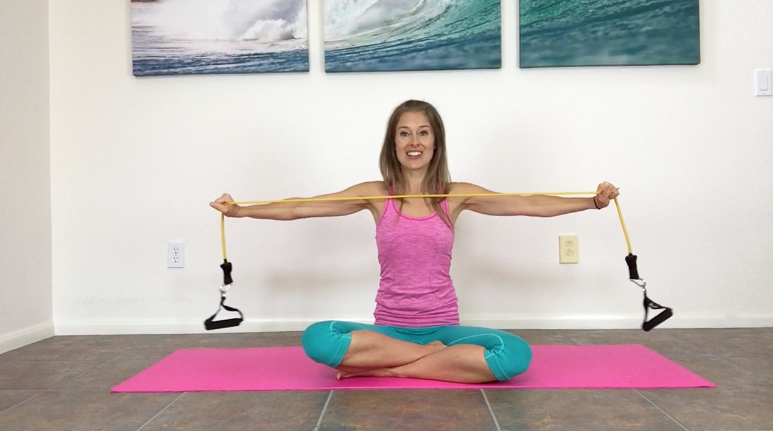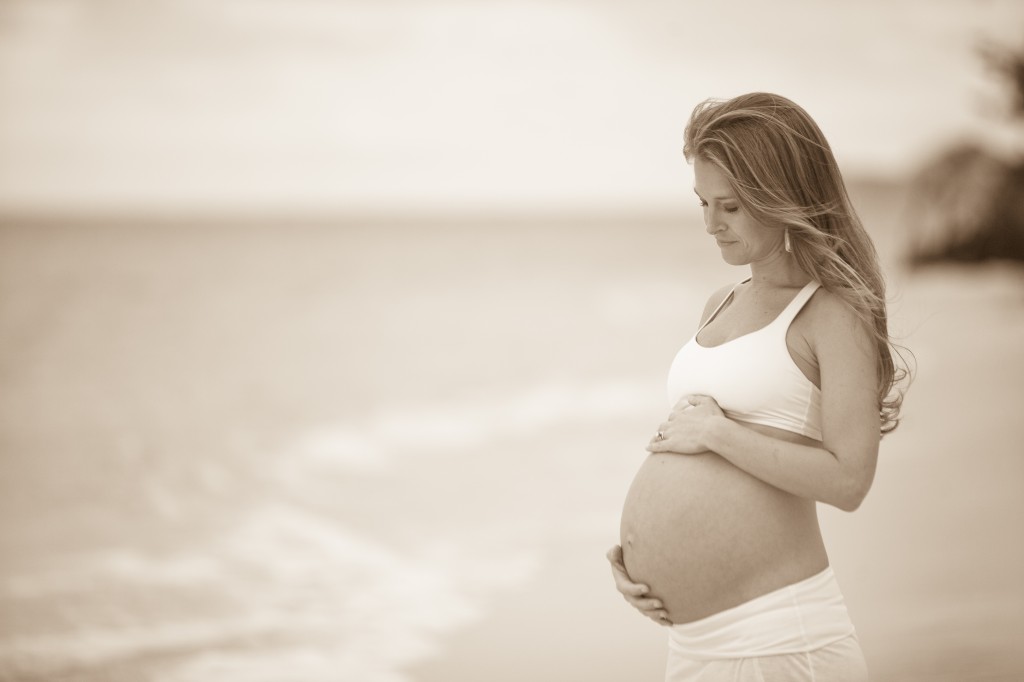After giving birth, most women want to know when and how they can return to exercise after pregnancy. It’s an anxious and exciting time, as women who have been limited in their workouts for nine months feel like they can finally move again and lose the pregnancy weight.
The problem is that most women, in their eagerness to return to working out, cause more harm than good for themselves in the first few months after giving birth.
Without good guidelines from their doctors, many women can develop longterm abdominal separation, pelvic floor weakness, incontinence and pain.
I gave birth to a beautiful baby girl 3 1/2 years ago.
I went through a 43 hour labor, including 4 hours of pushing and a vacuum, to bring her safely into the world.
I recovered quickly and wanted nothing more than to get back to working out and feeling like myself again!
Being a physical therapist, I knew there were some limitations on what I could do. I researched and tried to follow all of the guidelines and proper protocols.
Little did I know that the planks and sprints I read were fine after giving birth, were actually setting me up for a longterm bladder prolapse and pelvic floor weakness.
Because of my experience and the experience of so many of my clients, I’m determined to get the correct information about exercise after pregnancy to every woman who has recently had a baby!
Here are the statistics:
– 67% of women experience low back pain immediately after giving birth
– 37% still have it a year later
– 25% of women experience pelvic girdle pain immediately after giving birth
– 45% of women experience urinary incontinence 7 years postpartum – 7 years!
– 1/2 of postnatal women experience a prolapse
– 2/3 of women experience diastasis rectus abdominus (“separated abs”) after giving birth
– Exercises are proven to be effective in correcting pelvic floor weakness, but they must be done correctly and adapted for individual needs
What does that mean for you?
It means if you have given birth in your lifetime – whether vaginally or by C-section – you most likely have experienced one of the above symptoms and issues.
These things can all be improved, and even corrected, with the right exercise program.
On the flip side, they can all be made much worse with the wrong exercise program done too soon after giving birth.
I’ve developed an entire workshop on the fitness needs of postpartum women because there is so much we can be doing to help our clients (and ourselves!) after giving birth.
Here are some basic guidelines to help make sure you are on the right path. We are going to start with the time 0-16 weeks after giving birth:
1) Doctors generally release women to begin regular exercise about 6 weeks after giving birth. This may be more or less depending on many different factors, including type of birth, fitness of the mother and the doctor’s past experiences. Most doctors leave it up to the woman to decide, which leads to a lot of confusion as to what should and shouldn’t be done right after giving birth.
2) Immediately after giving birth you can start working on breathing and pelvic floor strengthening. With the trauma the abdomen has been through during pregnancy and birth, the breath often times becomes disconnected from the fascia and muscles. Teach breath work that minimizes extension of the belly and chest, and maximizes rib movement laterally. Think of inhaling to expand the ribs, and exhaling out through the crown of the head to facilitate length in the spine and abdominal cavity.
3) Strengthen the pelvic floor by learning how to contract those special muscles correctly! Ditch the regular kegal, and instead focus on trying to draw your tailbone towards your pubic bone. Hold this 10 seconds and do it 10 times. Then do the same action and see how many times you can contract in 10 seconds. The first exercise is for a long hold and endurance. The second exercise is for speed. We need both for a healthy pelvic floor.
4) Walking is one of the best ways to exercise after giving birth. Wait until you are released by your doctor and you feel ready. Put on your headphones and enjoy some “me” time while you push the stroller. Start with only five minutes and slowly build up over time.
At the six week point, you can generally start adding in other gentle exercises. You want to remember to always contract the pelvic floor when doing them!
Here are some examples of good exercises to start with:
Squats – avoid holding weights above your shoulders, as this can put too much downward pressure on your pelvic floor
Bridges
Ball squeezes
Pelvic tilts
Pilates leg circles
Sidelying leg lifts and clamshells
Cat/camel
Downdog pose
Resistance band work for the upper back, such as reverse flies and rows
While there are some exercises that are recommended during this postpartum time, there are also some that should be avoided completely until 16 weeks after giving birth.
You need to AVOID crunches, planks, oblique work and all plyometrics until 16 weeks postpartum.
Yep, that’s right.
No running, planking, jogging, sprinting, box jumps, squat jumps, jumping jacks, burpees, side planks, crunches, hundreds or bicycle sit ups until at least 16 weeks after giving birth.
Why?
You risk permanent stretching and weakening of your pelvic floor, which can lead to incontinence, pain and sexual dysfunction.
You risk permanent ab separation, which can lead to longterm low back pain and a lower belly pooch.
Once those things occur, it becomes much harder to reverse them then it would have been to simply not let them happen to begin with.
When a woman reaches 16 weeks postpartum, she can begin adding these activities in only if she has an abdominal separation of less than 2 finger widths.
A diastasis recti, or “abdominal separation”, occurs when the band of tissue between the two sides of the rectus abdominus becomes stretched during pregnancy. We measure a DR according to the finger width distance between the two sides of the abdominal muscles. If the distance is less than two finger widths, it’s considered “normal”. If it’s more, then a diastasis recti is present.
You want to give the abdominal muscles and underlying tissues 16 weeks to heal after a pregnancy. At that point, if a woman does not show a significant DR, she can slowly start adding in plyometric exercises and planks. If a women continues to have an ab separation of more than 2 finger widths at 16 weeks postpartum, it’s recommended she continue to avoid planks and crunches.
These exercises require the two sides of the abs to function correctly. When they don’t and someone attempts to do them, it will actually just make the separation worse.
That doesn’t mean that the core can’t be strengthened! It just means you need to be very deliberate in how you do it.
I know this goes against what we are told by the media and all the pictures posted by celebrities who returned to their “pre baby body” right away. I know we celebrate women who seem to “bounce” back and are doing burpees barely out of the hospital.
I know we compare ourselves to them and want to lose the weight as quickly as possible.
I also know what it’s like to live with a bladder prolapse that I might have prevented if I had only waited two more months to start running again.
Giving birth is like running a marathon (but with much more screaming and cursing involved). Be patient with your body and show yourself some grace. You will find your strength and speed again. You will fit into those jeans again.
Just wait a few more months to do it.
You will be happy you did.






